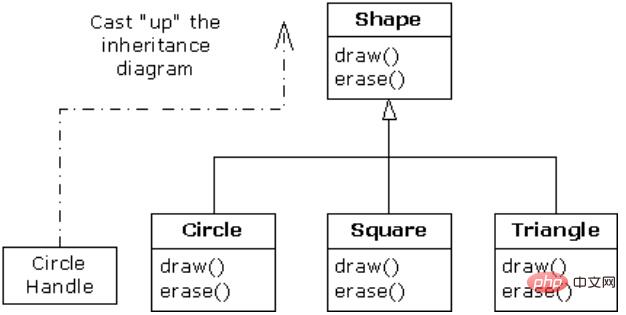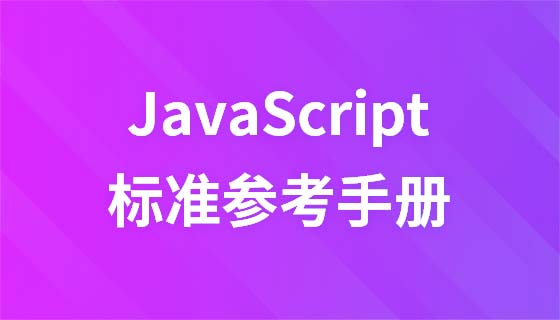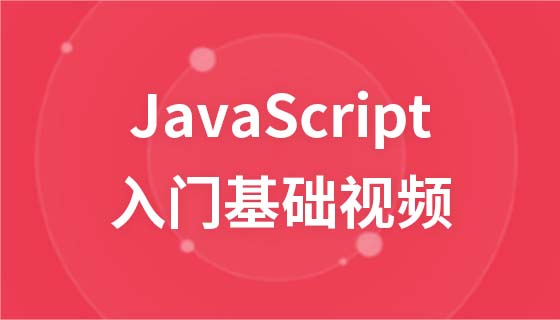
java繼承與合成基本概念
繼承:可以基於已經存在的類別來建構一個新類別。繼承已經存在的類別就可以重複使用這些類別的方法和域。在此基礎上,可以新增新的方法和域,從而擴充了類別的功能。
合成:在新類別裡創造原有的物件稱為合成。這種方式可以重複利用現有的程式碼而不更改它的形式。
相關影片教學推薦:java影片教學
1.繼承的語法
關鍵字extends表示新類別衍生於一個已經存在的類別。已存在的類別稱為父類別或基底類別,新類別稱為子類別或衍生類別。例如:
class Student extends Person {
}類別Student繼承了Person,Person類別稱為父類別或基底類,Student類別稱為子類別或衍生類別。
2.合成的語法
合成比較簡單,就是在一個類別中創建一個已經存在的類別。
class Student {
Dog dog;
}上溯造型
#1.基本概念
##繼承的作用在於程式碼的複用。由於繼承意味著所有父類別的方法亦可在子類別中使用,所以發給父類別的訊息亦可發給衍生類別。如果Person類別中有一個eat方法,那麼Student類別中也會有這個方法,這表示Student物件也是Person的一種型別。class Person {
public void eat() {
System.out.println("eat");
}
static void show(Person p) {
p.eat();
}
}
public class Student extends Person{
public static void main(String[] args) {
Student s = new Student();
Person.show(s); // ①
}
}eat
2.為什麼要上溯造型
為什麼在呼叫eat是要有意忽略呼叫它的物件型別呢?如果讓show方法簡單地取得Student句柄似乎更直觀易懂,但是那樣會使衍生自Person類別的每一個新類別都要實現專屬自己的show方法:class Value {
private int count = 1;
private Value(int count) {
this.count = count;
}
public static final Value
v1 = new Value(1),
v2 = new Value(2),
v3 = new Value(3);
}
class Person {
public void eat(Value v) {
System.out.println("Person.eat()");
}
}
class Teacher extends Person {
public void eat(Value v) {
System.out.println("Teacher.eat()");
}
}
class Student extends Person {
public void eat(Value v) {
System.out.println("Student.eat()");
}
}
public class UpcastingDemo {
public static void show(Student s) {
s.eat(Value.v1);
}
public static void show(Teacher t) {
t.eat(Value.v1);
}
public static void show(Person p) {
p.eat(Value.v1);
}
public static void main(String[] args) {
Student s = new Student();
Teacher t = new Teacher();
Person p = new Person();
show(s);
show(t);
show(p);
}
}public static void show(Person p) {
p.eat(Value.v1);
}動態綁定
當執行show(s)時,輸出結果是Student.eat(),這確實是希望得到的結果,但是似乎沒有按照我們希望的形式來執行,再來看一下show方法:public static void show(Person p) {
p.eat(Value.v1);
}1.方法呼叫的綁定
將一個方法同一個方法主體連接在一起就稱為綁定(Binding)。若在運行運行前執行綁定,就稱為「早期綁定」。上面的例子中,在只有一個Person句柄的情況下,編譯器不知道要具體地呼叫哪個方法。 Java實作了一種方法呼叫機制,可在運行期間判斷物件的類型,然後呼叫對應的方法,這種方法在運行期間進行,以物件的類型為基礎的綁定稱為動態綁定。除非一個方法被宣告為final,Java中的所有方法都是動態綁定的。 用一張圖表示上溯造型的繼承關係:
Shape s = new Shape();
Shape s = new Shape();
class Person {
void eat() {}
void speak() {}
}
class Boy extends Person {
void eat() {
System.out.println("Boy.eat()");
}
void speak() {
System.out.println("Boy.speak()");
}
}
class Girl extends Person {
void eat() {
System.out.println("Girl.eat()");
}
void speak() {
System.out.println("Girl.speak()");
}
}
public class Persons {
public static Person randPerson() {
switch ((int)(Math.random() * 2)) {
default:
case 0:
return new Boy();
case 1:
return new Girl();
}
}
public static void main(String[] args) {
Person[] p = new Person[4];
for (int i = 0; i < p.length; i++) {
p[i] = randPerson(); // 随机生成Boy或Girl
}
for (int i = 0; i < p.length; i++) {
p[i].eat();
}
}
}class Person {
void eat() {
System.out.println("Person.eat()");
}
}
class Boy extends Person {
void eat() {
System.out.println("Boy.eat()");
}
void speak() {
System.out.println("Boy.speak()");
}
}
public class Persons {
public static void main(String[] args) {
Person p = new Boy();
p.eat();
p.speak(); // The method speak() is undefined for the type Person
}
}如果子类中没有定义覆盖方法,则会调用父类中的方法:
class Person {
void eat() {
System.out.println("Person.eat()");
}
}
class Boy extends Person {
}
public class Persons {
public static void main(String[] args) {
Person p = new Boy();
p.eat();
}
}【运行结果】:
Person.eat()
2.静态方法的绑定
将上面的方法都加上static关键字,变成静态方法:
class Person {
static void eat() {
System.out.println("Person.eat()");
}
static void speak() {
System.out.println("Person.speak()");
}
}
class Boy extends Person {
static void eat() {
System.out.println("Boy.eat()");
}
static void speak() {
System.out.println("Boy.speak()");
}
}
class Girl extends Person {
static void eat() {
System.out.println("Girl.eat()");
}
static void speak() {
System.out.println("Girl.speak()");
}
}
public class Persons {
public static Person randPerson() {
switch ((int)(Math.random() * 2)) {
default:
case 0:
return new Boy();
case 1:
return new Girl();
}
}
public static void main(String[] args) {
Person[] p = new Person[4];
for (int i = 0; i < p.length; i++) {
p[i] = randPerson(); // 随机生成Boy或Girl
}
for (int i = 0; i < p.length; i++) {
p[i].eat();
}
}
}【运行结果】:
Person.eat() Person.eat() Person.eat() Person.eat()
观察结果,对于静态方法而言,不管父类引用指向的什么子类对象,调用的都是父类的方法。
更多java相关文章请关注java基础教程栏目。
以上是Java中繼承圖文詳解的詳細內容。更多資訊請關注PHP中文網其他相關文章!



